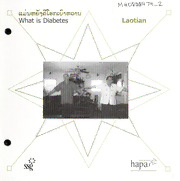Table Of Content1 . CS81C01P1
0, 0. ooo oo, o^
QJJ9tO60ff1^9LIJJ9,,ltlLli:JJ'nU 51 d§9£JtPlJ,UmjmiriLlQtf3,,)Gn<’l, SSntmjJ9£JQl6D9(n,
is is i v
o ay ) ay o I O ay OOO i/ ) I o ay O o
QtS)s3nQn9a)ttJul9^U,1in'lLIQ?JfflQS)9U63. QQsOOAJAJU’), &9UWU\')U)')Vm)&9a)&9ZJ QtPiCWDn^QSJ
nocuS°)t§9Gfm. m*iuuiig9a)S9U3ntQU9ng9Li6ji S9£jSTsriQG’imoffiij^s;iJCim 2 g?9u?j
so’ijjutQajutnu*), QQCi^9Ds8nd9ium£nLi. Q5oSs9£jIjl8nQmmoffi‘u»u9ilci 24 Ctcao,
HI HJ IS
§?9titcicsciQ'i9iJurn ctuttn^g^tn^uoiitciLonfm. sstimjeJi fb*ijj si'n89')89LKnjn5,
nucccigiumjccuoSjuLiu, upsriG’n99m89)mri6]2. ctci6^ui^u^rnQg9SJs8ri£iJCiLi
I I Hi 3 I I HJ
OO Ooe^l zs l O ayG) ayO C) ay ay sy«y l 6^ O I ey 5^
juu«utts)scu9)Litmu89). sgtiUsS^oirioiJJucjtawiJ^ugntmsgtis'tiritcc'imoin n^onulsn
CUIOlOluC ri9uIjUQ31ClSuriLlg9£J.
ttouej^gono 9’)i> 75 tJ
2. ccjuurngJiStemuimo*iu
QLnmo'njnnwLnQ^tucnj') tJU9tOGD9is*i*)m£jg99)m5iuug5'i^ffiQejsnmaici9u^s)uw59)w
m^^Q’icSumuriLiLnmu d?D8ffio)mej^9,)mai‘UQ59fuiIjcm9ctsff). cuimonjgfcSoin 1
cnffujUru;cnuiitnQSuij'iQ(nnu9Li, g9i£JtQ£)ttnu.un9D9*iLi 30 U. cinmgnDgsuciw 2
I HI 3 I
^ r* o 1 r* no. «-> o t o
juuctluLentu'imo'iu^KUCitnotU. Usjuiu 90-95% nuj/uutu'imp'iu fftctjjucmmcmj
stCcim 2. cju9C0sn?/nuju Qu,imo,iu3ntnjj9iejriO’Uj6oiSD60^ci(rnj*ienffiu?utS9Qg99)m'iiig39)
ay _ i «»
rnsnaTwci. qffigDtQ(nij9icn9iud?uQS9(ng5<]twQlju't)tcLlu9uciS)9iLi(rig5swffiLig9')moiu
2
<
orgutnmces8imuu*Htl*H: (iDi^cwaeiciscSsmoeitlcwenaiciuecSe)
e
mouncnunou ^n&jcrnjuo
^IS
Cl CO o CO i/O CO Cl Cl
1H*ltJCU'lC6D9Lle] jju msujjrioiJusgjnnujumgDcnu
Cl ci * ^
mo 9nctbuciJ9mr)3miti
i
tmii9u QdD9nQg5LlU9Ug50U(Ko
u
Cl
iiai?ucioa*)ma'iotnuoou tu9yii')um*)QtatcUuou
Su9iotQCjm*ioLnn
4. Smw^ccci^KcncigynucjSTericu'imaiufjtSQui 2 v\ionnutCTnocuS*)
• iiuum9isucQS9)3n5oriussm^L)^9s)m*iu
• cduTsnmof's (SwstnatsJiJtSgoCTUc'nj)
9')Qm*i?mtLlumo?'t)0’icjtQS)KcUu9#iijtm,io
»
tS9Q?JQt6DU09ff)Cl^nmffl?mC10QCSUtQS)iS*l
uum9ima’iudai')riu9i;to£j£Oj:m'i£j?u, soum^iDcniljo, us)tcmu9ci
9t;loLitosm9iLifuaijQm6Dom6D*iLidi9), soww^csfomjunriiims)*),
tftiriuQQS)tmo?^c5*itS(rio5n
CIO
t§3U^O0
5. uiiijnaucscucuofciccQcwetmtnujlosuniunocicS^oitniuiJtuimo'nj
o ck ni
sjzucitn 2 m©u
• • i
m9iuoounooQC9)cm3s)i;cm9
I %/ IS I
?m<q'ijum,njuiig9*)m*iij^otino(riQ3')^U6Dt(ri(rnjicri,u?uQS9Ci0s)tQm9
*S Cl I O I 00,0 O 004/ CO o
noatouciiJsg^wnucu^o'iJusJcjaLJritci mcOJjgntiaLimau
?miri*ujm<,ujmjg99)m,iii^O£jnooQ3')cius99)m9ru3'ia)iJ9o3eDttm9
nooc3o)S'i9)n,)LiQiot98)mn3c3#)39ut^LiL)ocn mauiocccjmumiD
6. n jjagitjgjnjonutsncuimo’liJSjgSciS_2
0*1
trnujjLi,iyi)n?u(riotnu m&Q'iQntitnsnti
« o. ci a i 3
mnujuanti 45 d tnactjirioi
»ud£9099ugomiitCnm99iij^CoM 2
vnudsh ccssuuiQmtiuSm'iu
Cl ^ Cl
oUnO^oUClUQsOSCia")
Cl _ HJ . 1 , *
0uUtocitL)m8ntC'imo’iuGn9iiqw,i, §9)ttJUUQU,imoffiu^sC(nmQn(n
Su?DU*ujqw*i, uiS tn^anSjLny^riQmjno*) 9 U9u
Cl ** Cl ^
moLncnunou
Cl O Cl
^,10Q3n')sQ9^Utt6D£?Js^?JnU909liJa5*)2JLlUl6Dffl£jn0'l
7. m«iufioiJcscHciJO?ci%^gJs*)nliTsnctJiaioiufjtScitn _2_ifl
nu9ffim'iutQuoa«uuu, sojjm°)mAjffint»ucQsD£wnc:n9)e]
mjSs)t;gn»uEM9 QteD^riouniigitmugg^jrmjQOgo'iQ^oriufuQtcngDtS
i/
99ri3n9iaa)m?j (tn9), Qirmsn, cscio^ntC'i^fuQsgu^u, qsci§3od
QteDtgu^gnSgos 20 on 30 mtn
miunouLignfzji^sin^nrigLifiotQatQSgueJ^tsciQ^uQ^ofiu
1/ I
viimincoiwisi9*)ficiutQci, ununoutruumiiJiti
wisiS9^«ni^)W£CcijnsJiyii6susgj8
r._
iidQcZxiD mgos)aiDgo^95QCjjtfuQCri0u n^8u9iLt/im»uuffiQuu (562)491-9100
A Story of a Laotian Elderly
“When 1 was about 51 years old. 1 began having problems with my vision; also I was always tired,
thirsty, and had to go to the bathroom often. So one day. I went to my doctor and she did a blood
test. My doctor told me that I had Diabetes Type II. I didn't know what it was, but I was scared.
Today, 24 years from my diagnosis, 1 have done what the doctor had told me. I take my three
medications daily, eat healthy foods, and walk everyday. But, I sometimes feel numbness in my
feet and hands and cannot see very well. 1 just wish that someone could have told me about the
disease earlier.”
Lao woman, 75 years old
What is Diabetes
Diabetes is a disease when your body cannot produce enough insulin to process glucose (a form
of sugar) in your body into energy. Type I Diabetes usually develops in children and young adults
before the age of 30. Type II Diabetes is the most common type of diabetes. About 90-95% of
people with diabetes have Type II Diabetes. When you have diabetes, your blood sugar level is
too high. A high blood sugar level is dangerous to your health.
Some Common Signs and Symptoms (which may or may not be present)
Excessive thirst Blurred vision
Frequent urination Tingling or loss of feeling in hands or feet
Hu nger Non-healing infections of skin
Fatigue Yeast infection
Drastic Weight loss Dry. itchy skin
Cuts or open sores not healim
What Happens to Someone With Diabetes Type II if Not Cheeked?
Severe problems in your health
Heart Disease (Coronary Artery Disease), which may cause a heart attack and stroke
Poor blood circulation which may lead to amputation of arms and legs
Multiple organ problems, including blurred vision or blindness
Multiple organ failures including kidney, liver and heart
Death
Funded by the U.S. Department of Health and Human Services - Centers for Disease Control & Prevention and the Administration on Aging.
A,
What Can You Do to Check If You Have Diabetes Type II?
• Get your eyes checked once a year
• Ask your doctor (health care provider) for a blood sugar level test once a year
• Check your toenails for any discoloration or infections
• Ask your doctor (health care provider) for a complete toot exam at least once a year
• Check your body everyday for soreness or cuts that don't heal
Risk Factors of Diabetes Type II
• You are overweight
• You are 45 years of age and over
• A family history of diabetes type II
• You are inactive (sedentary) and don't exercise
• High blood pressure
• History of gestational diabetes, a form of diabetes occuring in pregnancy, or giving birth
baby weighing more than nine pounds
• Asian and Pacific Islander Americans are at high risk
What Should You Do To Prevent Diabetes Type II
• Eat a balanced diet (healthy), including fruits and vegetables
• Eat three times a day and keep your meals about the same time each day
• Exercise (walk, dance, light house work, gardening, etc.) 20-30 minutes each day
• Tell your family members and friends to do the same
*** If you use public health services, ask for an interpreter
if you cannot speak English well ***
For more information contact:
Families In Good Health
St. Mary Medical Center/ Si Mary Medical Center
Families in Good Health eiiw
411 E. 10th Street, Suite #207
Long Beach. CA 90813
Tel. (562) 491-9100

